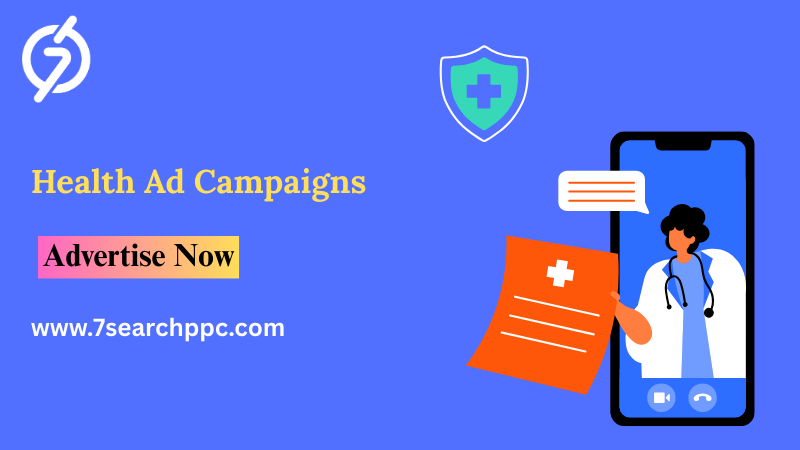Healthcare has never been more competitive. From local clinics to global pharmaceutical brands, the need to reach patients and professionals in meaningful ways has reshaped how advertising works in this sector. In fact, reports show that digital healthcare advertising spend is projected to cross $20 billion globally by 2028. The big question is: how can advertisers cut through the noise while staying compliant and relevant? That’s where Health Ad Campaigns come in.

The Market Shift Toward Digital Care
Over the past decade, patients and professionals alike have moved online for answers. From searching symptoms to comparing hospitals, the internet has become the first touchpoint in healthcare journeys. For advertisers, this shift has created both a massive opportunity and a unique challenge. Unlike retail or entertainment, healthcare audiences demand precision, sensitivity, and trust.
The Challenge Advertisers Face
Most businesses in healthcare know the struggle: traditional ads don’t resonate anymore. A flashy banner or broad messaging often gets ignored or, worse, feels inappropriate. Patients are overwhelmed with information. Doctors and specialists are pressed for time. This creates a double barrier for advertisers—how to engage without overwhelming, and how to target without crossing ethical lines.
What Are Health Ad Campaigns?
At the simplest level, Health Ad Campaigns are structured advertising efforts designed specifically for the healthcare sector. They’re not just about pushing products but about building awareness, trust, and credibility. These campaigns can focus on:
- Promoting hospitals, clinics, or private practices
- Driving awareness for medical devices or pharmaceutical products
- Encouraging patients to consider preventive screenings or wellness programs
- Educating healthcare professionals about new treatments or tools
Think of them as carefully crafted strategies that combine the creativity of marketing with the responsibility of medical communication.
How the Best Campaigns Work
Successful campaigns don’t just “sell” healthcare. They solve problems. Let’s look at a few healthcare advertising examples that highlight this:
- Patient-centered awareness drives – A hospital creates a campaign around heart health, targeting local communities with actionable screening options.
- Professional education campaigns – A pharmaceutical brand uses digital channels for advertising to healthcare professionals, offering insights backed by clinical data rather than promotional fluff.
- Healthcare programmatic advertising – Automated platforms deliver tailored messages to patients based on conditions, demographics, or geography, ensuring relevant outreach without wasting ad spend.
The common thread across these examples is precision. Instead of casting a wide net, campaigns are now built around specific patient journeys or professional needs.
Smarter Ad Approaches
Advertisers who thrive in healthcare don’t rely on generic messaging. Instead, they use tools and strategies like:
- Healthcare marketing and advertising platforms that allow for compliance-focused targeting
- Programmatic ad networks that place messages in front of the right people at the right time
- Data-driven campaign adjustments to maximize ROI while maintaining sensitivity
For example, joining a specialized health ad network helps advertisers place their content in channels already trusted by healthcare audiences. This ensures ads aren’t just seen but also respected.
Why Health Ad Campaigns Are Different From General Ads
Healthcare is a regulated field, and every campaign must account for that. Unlike selling a gadget or a piece of software, promoting medical services carries ethical and legal responsibilities. Messaging needs to be:
- Accurate: No overpromises or misleading claims
- Respectful: Sensitive to conditions and patient emotions
- Targeted: Relevant to either professionals or patients without crossing privacy lines
This is why many advertisers are moving away from scattershot marketing to finely tuned campaigns that balance empathy with strategy.
The ROI Advertisers Can Expect
When designed thoughtfully, Health Ad Campaigns can deliver strong returns:
- Higher patient engagement: Campaigns that educate tend to spark trust, leading to better response rates.
- Cost efficiency: Programmatic targeting reduces wasted impressions.
- Long-term loyalty: Patients or professionals who trust your brand are more likely to stick with it.
Numbers back this up. A survey revealed that targeted healthcare advertising can improve conversion rates by up to 50% compared to generic campaigns. That’s a huge shift in efficiency for advertisers.
Practical Takeaway for Advertisers
If you’re looking to stand out in healthcare, it’s not about being louder—it’s about being smarter. Campaigns that combine real patient needs with professional insights can outperform even the most expensive mass-media pushes. Whether you’re running a local clinic or a national pharmaceutical initiative, the key is to craft campaigns that feel like solutions, not sales pitches.
CTA: Your Next Step
Ready to take action? Don’t just watch competitors capture the healthcare market. Start by learning how to create an ad campaign that’s built for healthcare audiences. With the right network and a thoughtful approach, you can design campaigns that reach the right people while building trust and delivering measurable results.
A Conversation With Advertisers
At the end of the day, healthcare advertising isn’t about jargon or big budgets—it’s about connection. Think about the last time you saw an ad that genuinely helped you make a better choice. That’s what patients and professionals are looking for in this space. If you can build campaigns that feel human, informative, and respectful, you won’t just meet KPIs—you’ll actually make a difference. And that’s a win worth investing in.




